Samuel Johnson famously said in 1777 ‘When a man is tired of London, he is tired of life‘. The same could easily be said of Barcelona. And yet, although you might not be tired of this city, you might need a break from its unrelenting busyness. I have a suggestion. Go to a RENFE station in the city – maybe Sants, or Plaça de Catalunya, and simply get a train going northwards up the Maresme coast. You’ll enjoy the journey.
Back in the 1840s, when the trainline was constructed, it was as a goods line. It had therefore to be built next to the sea and the various ports along the way, with a road running alongside the tracks. So you, having picked a seat on the right hand side of the carriage, will travel alongside the seashore for your entire journey. Spare a thought for all those communities now divorced from the sea which gave them their reason for being. Although it’s easy enough really to pop through a pedestrian underpass and join the beach path which extends all the way from Barcelona, the whole way up the coast.
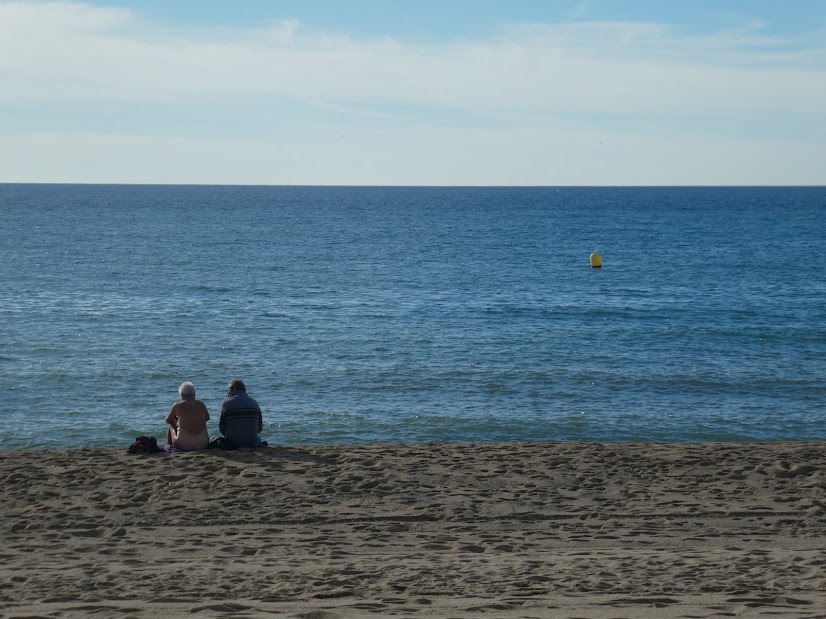
Where will you stop off? Maybe Badalona? if you want to meet me, I’ll join you at Emily and family’s home town, Premià de Mar. We could stop at charming Vilassar de Mar. We could stay in the only big town in the area, Mataró, which is well worth a day of your time, and I’ll take you to all of these places eventually, so we’ll go two stops further and get off at Caldes d’Estac. This was – and to some extent still is – a spa town. Its glory days in the late nineteenth and early twentieth centuries are over, but the town centre and beach-side villas still have a certain charm and sense of style from those days. Away from the immediate centre it’s been spoilt by ripping down older properties in favour of tall apartment blocks, and a busy highway has been constructed above this hilly town. Luckily, enough is left. And in any case, we’re staying in the centre to visit its Picasso museum, Fundació Palau i Fabre.
Yes, this small town has a museum dedicated to Picasso, with works too by the likes of Tàpies and Miró. And that’s because the renowned Catalan poet Josep Palau i Fabre (no I hadn’t heard of him either) was a friend of Picasso, who gave him several of his works: others he bought. By 1987, Palau had decided that, with no descendants of his own, he wanted to form the ‘Palau Foundation’ to house and display these works. But where? He hunted throughout Catalonia; he went to Andorra, to Menorca, to Ibiza. All the would-be deals he thought he had came to nothing.
And then, in Caldes d’Estrac, one of the spa town’s thermal centres was put out to tender. Nobody wanted it. The town’s mayor saw an opportunity: an opportunity to bring a first class cultural asset to the community. In 2003, the Fundació Palau opened its doors. It houses a permanent collection, temporary exhibitions, archives and a library. I think it’s a national treasure. But the day I visited, I shared the exhibition spaces with no more than half a dozen other visitors – mind you, it was November.
Anyway, in I went, having first taken a snapshot of the town reflected in an outside window of the gallery.

I was greeted by a temporary exhibition, which l loved. Here was the young Picasso, surrounded by his artsy friends, all sketching one another, doodling, cartooning, finding their artistic feet. Only Picasso from this period ever made it big-time, but I still found them to be a talented and engaging bunch. Here are three examples.
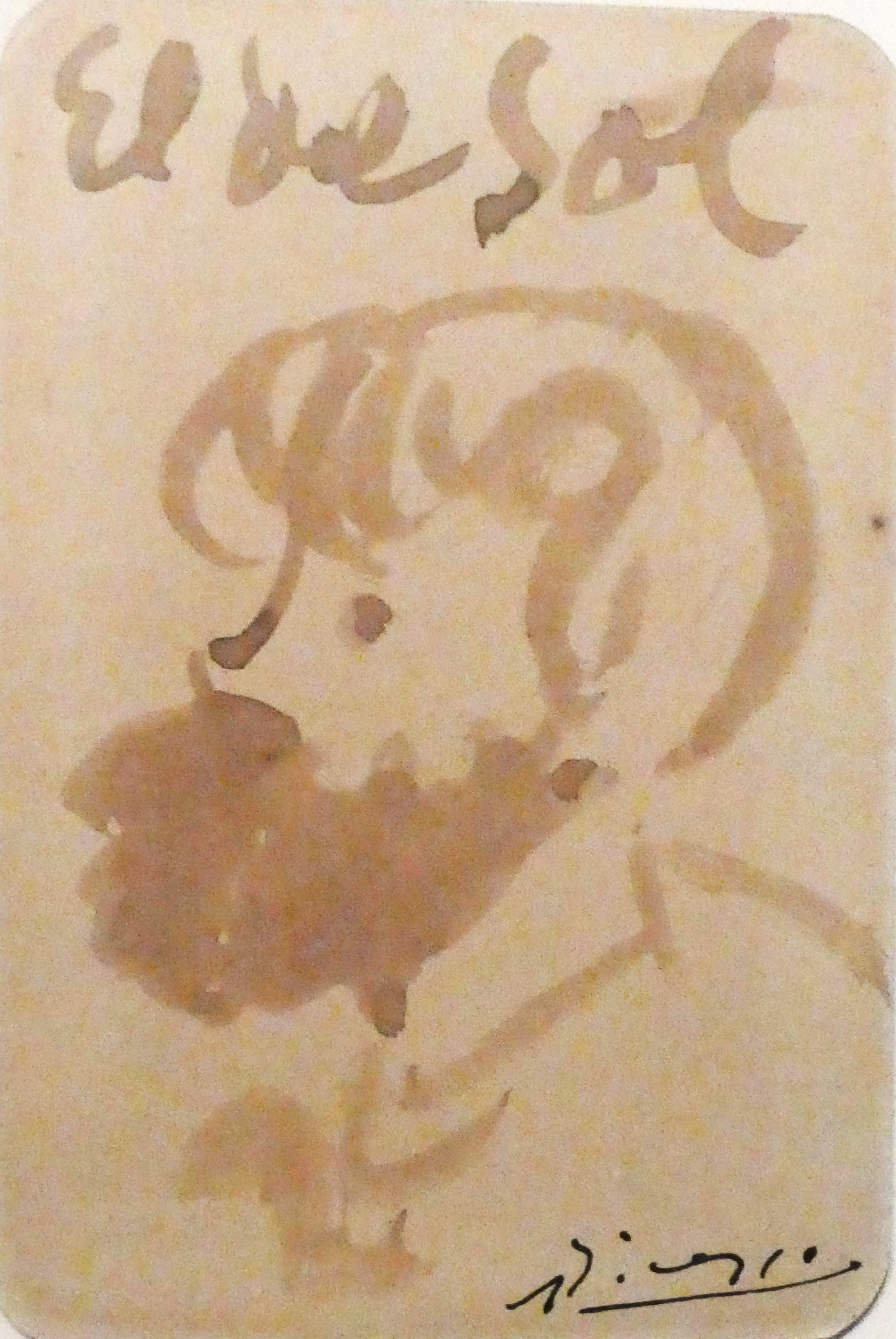
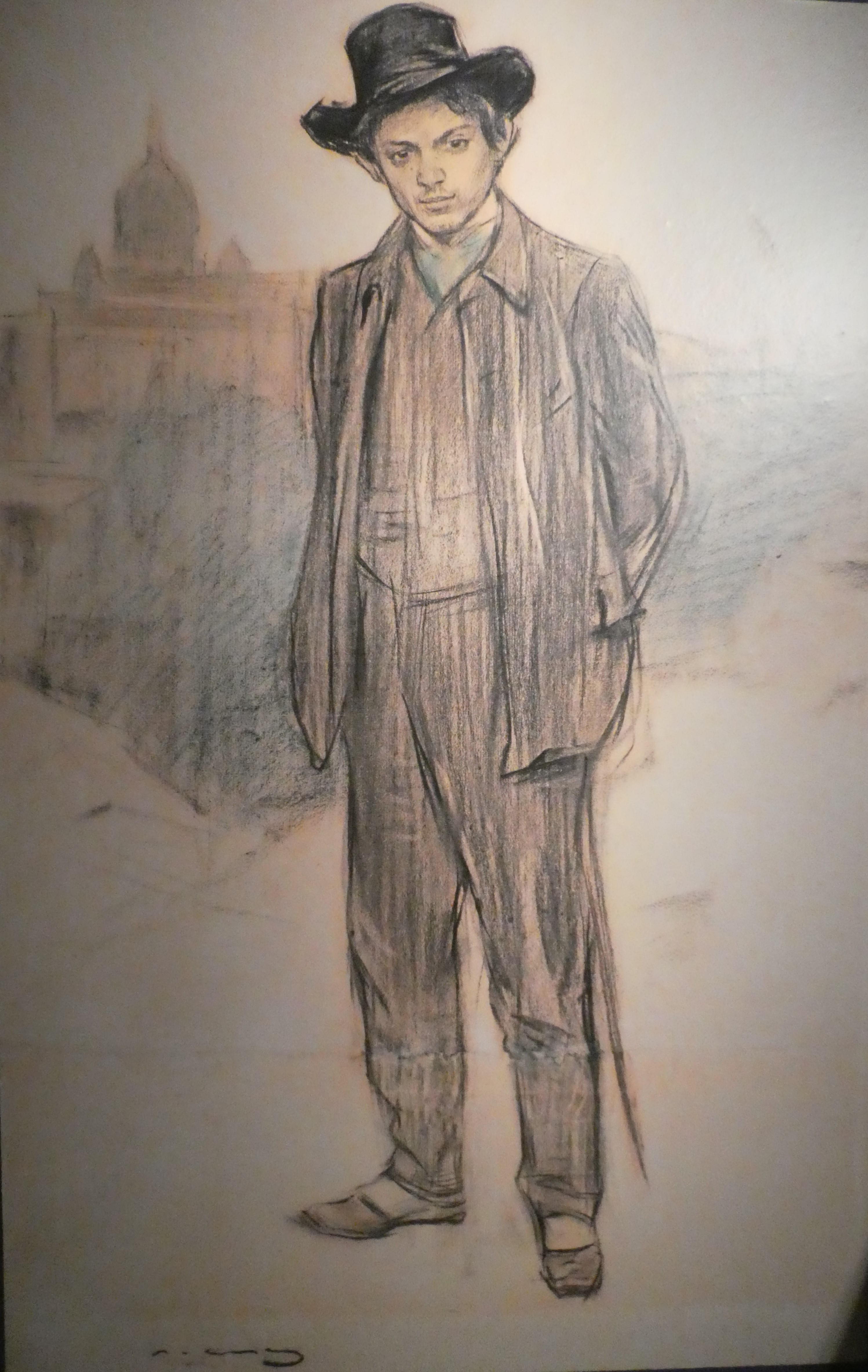
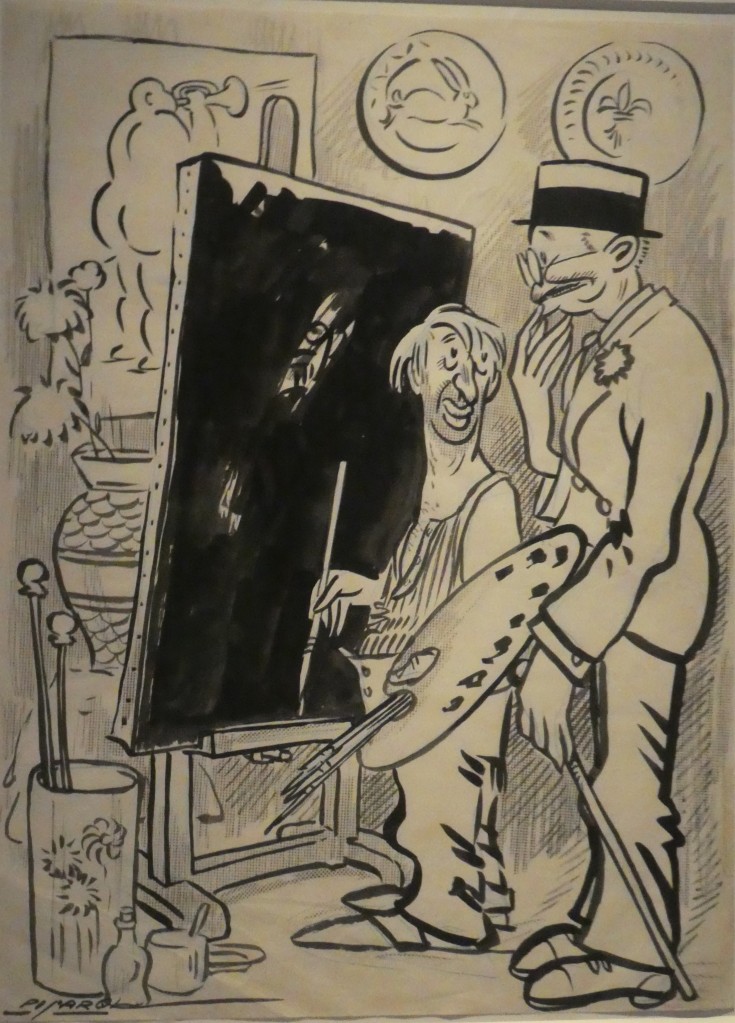
Then it was off to the collection of poetry by Palau and friends. Though it was often visually interesting, I struggled with this. I don’t pretend to speak Catalan, though I can read it adequately. You might want to have a go yourself if you speak French, Spanish or Italian. Just click here for an example of Josep Palau’s poetry.
Finally, it was upstairs to see what I could see. I knew not to expect to see the equivalent of, say, Les Demoiselles d’Avignon, or Guernica. I was quite prepared to be interested in a collection mainly of sketches and drawings by Picasso, and a few works by his friends and contemporaries.
It was sympathetically displayed: though I’ve decided my own attempts to photograph them were unsympathetic, and – apart from showing you one late sketch by Picasso, showing himself as a faun – I’ll instead give you an impression of one of the display rooms.
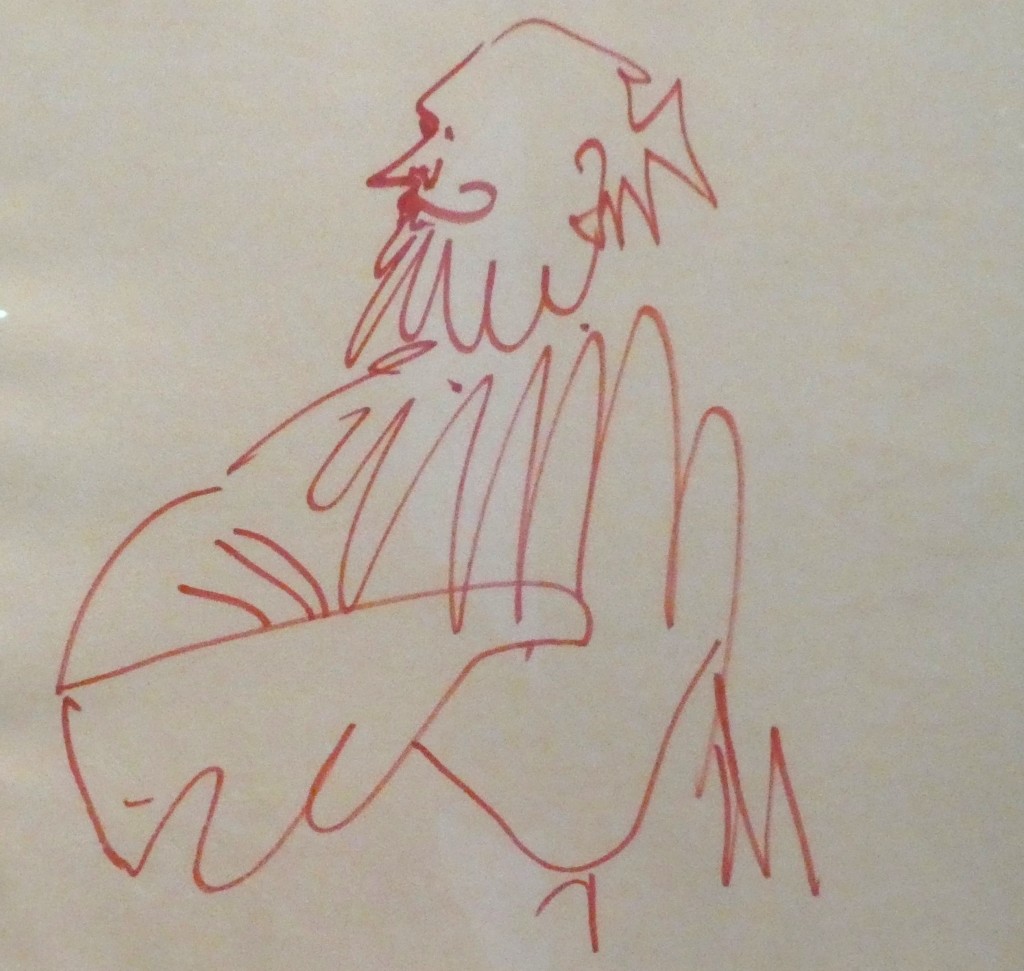
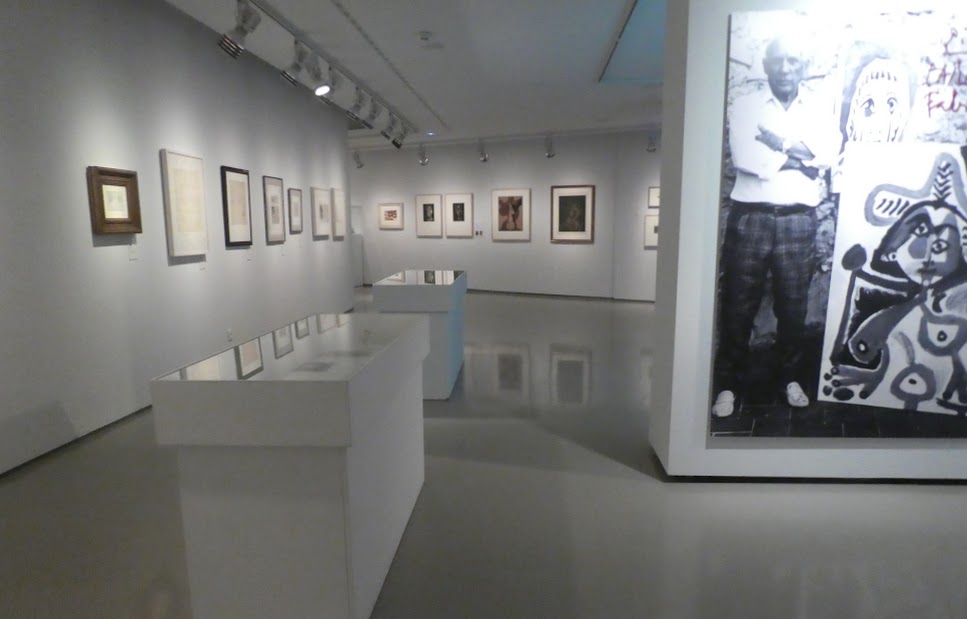
Then I had a stroll round the old town. The feature photo shows one of the 16th century towers built when the town was suffering from the depredations of Turkish pirates. And the picture below shows the building which was once the British Embassy. Yes, during the Spanish Civil War of 1936 – 1939 many embassies moved themselves out of the main firing lines and Caldes d’Estac was the choice of quite a few. The Argentinian Embassy is a few doors down.
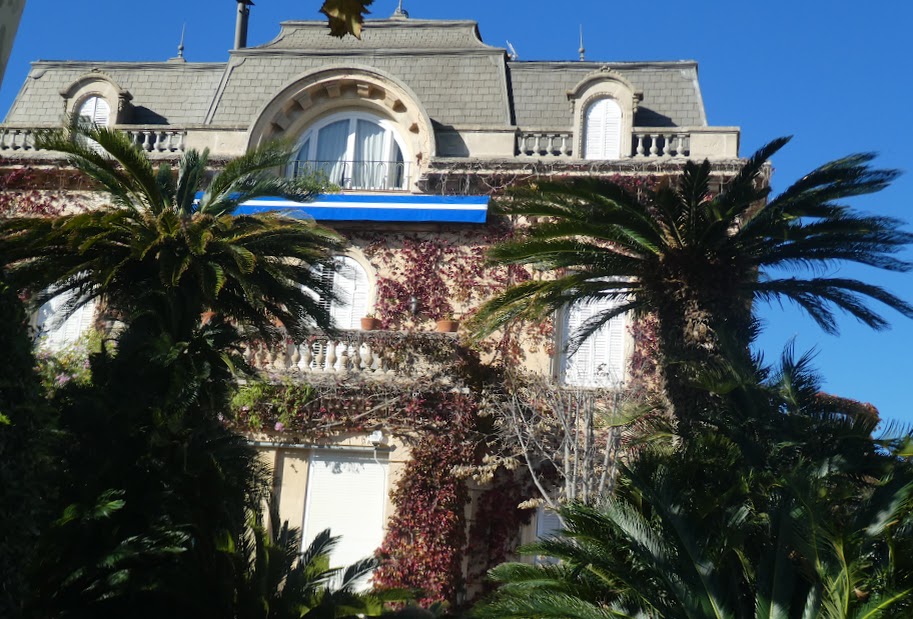
A good day out. And the museum makes a great (and very much cheaper) complement to Barcelona’s Museu Picasso.

Beautifully framed shot. Another spa town to add to my list. Despite having lived it one for decades, it’s only recently that the penny’s dropped that they’re often charming, interesting towns with lovely parks and gardens!
LikeLiked by 1 person
Oh, so you’re a spa town type too! I lived in Harrogate for some years. The spa water is very sulphurous and beyond disgusting, smelling and tasting of rotten eggs. Luckily, Harrogate itself is not disgusting.
LikeLiked by 1 person
I visited Harrogate on a rainy February Sunday decades ago and spent much of my time in Betty’s! I’ve lived briefly in Cheltenham and for a long time in Bath, both spa waters equally vile.
LikeLiked by 1 person
A good day out and a fascinating read! Great! Thank you.
LikeLiked by 1 person
Oh, thanks so much!
LikeLiked by 1 person
This series of yours is doing a great job in signposting some hidden (or somewhat concealed) gems that I met most visitors to Barcelona never see!
LikeLiked by 1 person
I may keep schtum about some things!
LikeLiked by 1 person
An enjoyable little tour. Thanks for taking me along.
LikeLiked by 1 person
Thanks fr coming!
LikeLiked by 1 person
Love the idea of Spanish railway adventure.
LikeLiked by 1 person
All good clean fun!
LikeLike
What a wonderful way to discovered hidden gems untouched by mainstream tourism. Traveling with you, is a joy, Margaret.
LikeLiked by 1 person
Ah thanks Rebecca. So glad you came along.
LikeLiked by 1 person
I’ve a friend in Sitges, but I think that’s the other direction?
LikeLiked by 1 person
It is. And of course the southwards expeditions along the coast would be rewarding too.
LikeLiked by 1 person
Love the shot of the town reflected in the window and all your outing suggestions.
LikeLiked by 1 person
You’ll have lots to do when you come to Barcelona!
LikeLiked by 1 person
💜
LikeLiked by 1 person
w enjoyable taking a train trip, Margaret! I love to take train trips in Europe.
Thank you for the tour. I watched a program about Picasso o CBS Sunday Morning, it was more about of how others think about him as a person than his art works.
LikeLiked by 1 person
Oooh, I’d like to see that!
LikeLiked by 1 person